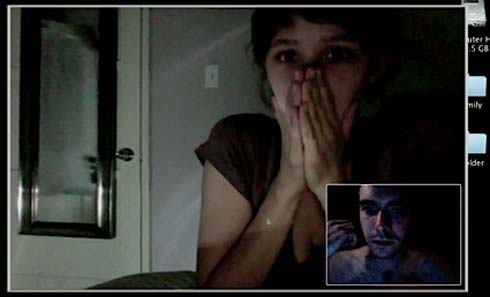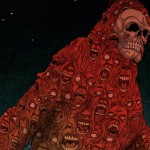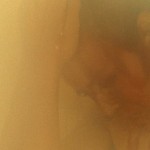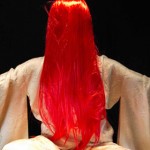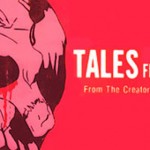SICK THINGS: “V/H/S/”
SICK THINGS
An interview with producer Brad Miska and writer Simon Barrett of V/H/S
Kier-La Janisse
————————–
These pages have been awash with horror anthologies in the last year, and while the format has a reputation for hit-and-miss segments, it’s also proven to be a particularly fertile arena for genre film experimentation, with multiple directors given a theme to run with and relatively unobstructed artistic freedom. It’s been interesting to observe how the latest crop of anthology films are curated by their respective producers; the directors and writers who are approached, and the ways that they adapt the genre to their own visions. V/H/S/ itself is hard to pin down as a straight-up horror film, even though the genre is clearly the starting point for its various directors: Adam Wingard, Glenn McQuaid, David cialis100mg Bruckner, Ti West, Joe Swanberg and the collective Radio Silence. It is the latest in the gradually-concretizing alliance between indie stalwarts on either side of the genre line that possibly began with Adam Wingard and Joe Swanberg’s collaboration on What Fun We Were Having: Four Stories About Date Rape (although the Duplass Brothers’ Baghead prefigured the mumblegore trend a few years earlier) and reached its most eloquent self-commentary in Joe Swanberg’s Silver Bullets. Throughout that time, a mutating crew has evolved of writers/actors/directors who swap roles on eachothers’ projects, mostly coming from Wingard/Swanberg camps, as well as via the collaborators and protégés of actor/director/producer Larry Fessenden (Glenn McQuaid and Ti West among compare prices levitra them). It’s been really fun to watch this happen, and clearly Brad Miska of Bloody Disgusting thought so too, because he brought all these people together to create V/H/S/, with the idea of creating a piece of indie Americana that addressed the reality horror fad.
Things kick off with Adam Wingard’s wraparound story Tape 56 about videotape thugs (Calvin Reeder and Lane Hughes among them)who exploit unsuspecting women for internet-bound roughies before getting called in for a mysterious job, David Bruckner (The Signal) turns in an unnerving story of preternatural obsession called Amateur Night (that strangely reminded me of the “Baby’s in Black” episode of the Beatles cartoon!), Glenn McQuaid (I Sell the Dead) exacts digital vengeance in his backwoods pixelfest Tuesday the 17th, Ti West’s Second Honeymoon stars Joe Swanberg (as well as Kate Lyn Sheil, their mutual co-star in Silver Bullets) on a road trip to relationship hell, Swanberg’s The Sick Thing that Happened to Emily When She Was Younger eschews VHS altogether in favour of the real-time horror potential of skype, and Radio Silence close out the piece with the accidental discovery of a dangerous cult who aren’t too keen on uninvited company in 10/31/98.
Both the wraparound story and the showstopper (in my opinion) were written by Simon Barrett, the sardonic screenwriter of western-horror Dead Birds and Adam Wingard’s A Horrible Way to Die, Autoerotic and You’re Next , and we were lucky to have both producer Brad Miska and Simon Barrett answer a few questions for Spectacular Optical about the genesis and central themes of V/H/S. Both will be present at the Montreal premiere of the film on July 28th.
Brad Miska:
This was your idea. What gave you the idea, and how did you select who you wanted to Give it to my father ,he said it is good Buy levitra online us: all the medications one can see in our product lists are generic. work with on it? What were the guidelines or mandate of the project? How hands-on were you with all the films?
The idea was actually formulated for television. We had been talking internally with Simon Barrett and Adam Wingard about doing a different project and eventually moved on making a feature with them instead. Simon wrote the wrap around based on the concept and they went off to shoot it before they went behind cameras on You’re Next.
From there we just talked internally about directors I had relationships with through Bloody-Disgusting that we all trusted to go off and do their own thing. Some of the directors had their own ideas, others we had sort of pushed in a direction to fill holes; we didn’t need two slashers or two ghost stories. It was highly experimental, a trust fall of filmmaking. We received treatments, then scripts and then let the directors go off and do their damage. At the end, we compiled everything and put it together like a puzzle. It was easy to assemble, but difficult to figure out where to trim. And being that we filmed the wrap first, it took some fantastic work by Adam and Simon to break that up in a way that worked with each piece. That was incredibly difficult.
How was the structure determined? Did the directors collaborate on how their segments would fit together?
The only real collaboration was that new directors could see the previous directors’ work. Meaning, they weren’t all shot at once, therefore the only thing everyone could really go on was Simon and Adam’s wrap. The structure came at the end; there was a lot of debate about how to start the film. Do we open with a slow burn or launch it like a rocket? The finale was interesting as it originally ended with Adam and Simon’s segment, but the Radio Silence short was so effin’ good we wanted to go to credits from there. We figured that, since the viewers are watching an edited VHS tape, there’s no reason we couldn’t end the film with an awesomely energetic end credit sequence with a montage of footage from the wrap. We’re all sick of seeing found footage end with a black screen; we wanted the audience to rock out.
How much was the actual format of VHS meant to be a noticeable component of the films? (Swanberg eschews VHS altogether in favour of Skype) and how much of the vhs fx were created using actual vhs?
The idea is that the audience is watching a dirty VHS edit by some mad scientist video editor. The segments can be any format, technically speaking.
Do you see these kinds of anthology projects as curatorial activity as much as producing a feature film?
It’s actual more difficult because you’re making multiple movies with multiple directors. That means extra paperwork, extra problems, extra everything. In the end, we hope that all equates to extra awesome.
Just regarding my last question, what I actually meant in terms of anthologies being like a ‘curatorial” project is more in terms of the vision you had for the whole piece and how specifically each filmmaker/filmmaking team was approached in order to create a whole that fit that vision. Sort of like the way that people curate short film programs at festivals and theatres; short films are not put together (hopefully) just because they’re new and cool, but because when taken together there’s a certain effect, a certain tone, or an interesting observation about where we’re going culturally. So can you talk a bit more about each of the people you approached and what artistically drew you to them for this project?
I guess the best answer to this question is it’s kind of a big “fuck you” to found footage horror films that take themselves so seriously. With Paranormal Activity, it was the first (in a decade), so it’s totally cool that they played it straight — but every other found footage movie acts as if the audience is stupid. The audience now knows found footage isn’t real and to try and trick them is just plain insulting. So, VHS respects it’s audience and that was the approach. Each filmmaker was asked to make sure there’s an actual reason for the camera to be filming and to stray away from referencing it. As a whole, that’s the best way to explain how they’re connected artistically. Otherwise, it’s just cool to do a found footage movie about people finding footage 😉
Simon Barrett:
You’ve described V/H/S as a found footage movie for people who hate found footage movies. But you described A Horrible Way to Die and You’re Next the same way (in terms of their relationship to serial killer movies and home invasion films, respectively). You seem to have contempt for a lot of genre films but at the same time, bad genre films seem to be your fuel, they create trends that you then aim to obliterate. Can you tell me a bit about how you see your relationship with the genre, especially since you are now being held as leading the curve as a genre screenwriter?
It is true that I have contempt for the vast majority of genre films, but so should any intelligent viewer. Most horror films, for example, are absolutely fucking terrible, and one of the primary reasons for that is that most studio horror films are made by people who may not have contempt for most horror films, but certainly have contempt for the horror genre and its fans. Most studio executives naturally assume that horror fans are idiots, and therefore not much effort is made to release unique or interesting horror movies, because, like, who would watch them?
I love horror movies and I love horror fans. I’m not motivated to create genre films by contempt but by disappointment. In the case of A HORRIBLE WAY TO DIE and YOU’RE NEXT, for example, I love serial killer films and home invasion movies – in theory. I love the ideas behind them. And some of those films are great, but most of them are junk. Also, they’ve become faddish, and therefore they’re now being made for the wrong reasons. Adam Wingard and I approached both of those movies like, “Okay, we love serial killer movies and home invasion movies, but how do we do something new there, something that respects the genre but is still original, especially since so many films like this have been made?” I’m not saying we were successful at that, that’s not for me to claim, but at least by starting with that attitude, we hoped we’d make something different even if we failed.
With V/H/S this thought process was even more blatant, because there’s sort of a limited numbers of reasons a rational person might film themselves encountering something scary. So when V/H/S was first being discussed, I explicitly sat down and tried to think of thematically interesting found footage horror stories that could be told in a way I hadn’t seen yet. I watch a lot of found footage horror movies, because I enjoy them – again, in theory. Again, most of them fucking suck. So, we just tried to do something different, and we’re very grateful that horror fans mostly seem to be enjoying that.
I loved the Emily segment, I think it might have been my favourite.What was the collaborative process like for you and Joe on this? Were you writing together in person or over email etc?
Thank you! The collaborative process on that segment was very unusual because the germ of that idea came from Brad, but he initially wanted to take it in a direction I couldn’t really wrap my head around creatively. I don’t want to spoil anything, but I was like, the only way I can think to approach this concept is by telling it like a haunted house story, which was kind of the opposite of what Brad was thinking, but when he read my script he was still happy. I’d also been in a long distance relationship for several years, and spent a lot of time on Skype because of that, and thought the anxiety of being able to see the person you cared about but not be there if you saw them in danger was something I wanted to play with.
Adam and I had wanted Joe Swanberg to be a part of V/H/S from the start because we’d worked with him recently and knew he’d bring something great to the project, so I talked to Joe vaguely about what I was thinking before I wrote the script, but then went off on my own and came up with the story and characters, which is generally how Adam and I work. The funny thing is, I knew I was writing for Joe, who specializes in directing improvisational performances and has never written a full script, so I wrote all the dialogue as kind of temp stuff, thinking he and the actors would just work it out on set. And then Joe read the script and liked it so much that he decided to ask the actors to perform their lines verbatim. I was very flattered by that, obviously, but I was also like, “Um, I need to do a rewrite then.” Joe’s a very collaborative filmmaker and I was on set producing, and then later in the editing room, but mostly I just came up with the story and script on my own, and then went into producer mode with Adam, working on practical stuff while Joe did his thing.
Also regarding Emily, I love how this character reacts so bizarrely to the events surrounding her, she acts like she thinks she deserves it, and accepts her fate so willingly. She’s a great character (if I’d seen the film before writing my House of Psychotic Women book, it would be in there!). Can you tell me about what inspired this character and how you found Helen Rogers for the part? (she is great!)
Casting Helen was all Joe. He’d seen her in a short film and remembered her work. He sent me the link to her reel, which happens to be on her website with all of her fiction writing, all of which is very strange and great. I was just like, “She’s perfect.” Her take on the character is I think a lot of what people respond to, she brought way more to the role than was on the page.
In terms of creating that character, again, I don’t want to spoil anything, but the whole concept of “The Sick Thing That Happened to Emily When She Was Younger” was to explore this idea I had of “codependency horror,” where the focus of the film, because these two characters are always onscreen in close-up, is their relationship, and how it’s healthy and unhealthy for them. That had to feel real. I didn’t want the Emily character to act like characters in haunted house movies normally do, because that would be stupid and boring, kind of like I said in answer to your first question. I liked the idea that she was brave, and curious, but that it came from an oddly disaffected place; she’s obviously had some past trauma, which is referenced in some not-so-subtle ways. And of course, we’re trying to be fairly funny in a dry way with all of that stuff, too. So I just tried to write her as funny and outgoing, but also sort of odd and detached. Then Helen and Joe did all the rest.
Brad mentioned you, he and Adam were originally supposed to be working on a TV project and that somehow morphed into V/H/S/. What was the TV project? Is that something still in the cards?
When Brad first brought the V/H/S concept to us, I think he wasn’t quite sure how he wanted it to be realized, and he was leaning towards television. Because our world at that time was independent film, we gravitated towards the anthology concept, and then I pushed that further by writing the wraparound segment that Adam directed, which we shot first. So, after that, the movie was pretty much locked in, ha. But nothing specific had ever been planned for TV, it was more that in the early stages of conceiving V/H/S, a lot of ideas were tossed around.
I think we all still want to do something in television. A lot of truly great storytelling right now is happening in that medium, for obvious reasons. I just don’t have any experience there yet, so me saying, “I’d love to create a television show” sort of feels like me saying, “I’d love to walk on the moon.” I would, but like, I don’t exactly know how to get there. Gary Binkow, one of the other producers on V/H/S, has a lot of experience in that world, and we’ve been talking with him about various things, so maybe someday. But right now, nothing specific is in the works.
——————–
V/H/S screens July 28th at 9:10pm in the Hall Theatre, with writer Simon Barrett and producers Brad Miska and Roxanne Benjamin in person. More info on the film page HERE.

 July 28, 2012
July 28, 2012  No Comments
No Comments



